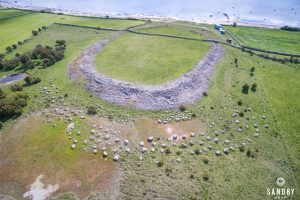Gold rings and coins dating back to 5th century AD discovered at the site of Sandby Borg, a ringfort on Öland, Sweden confirm a theory that the island was in close contact with the Roman Empire.

The golden artefacts were uncovered by archaeologists Clara Alfsdotter and Sophie Vallulv led by Helena Victor. The researchers also found pieces of Roman glass at the site indicating the presence of an important house. The coin was made in honour of Western Roman Emperor Valentinian III, who ruled between 425 and 455. It depicts the emperor with his foot resting on the head of a barbarian. Meanwhile the size of the rings suggests that they were a valuable deposit of gold. Archaeologists now suspect that the structure discovered may have been the house of a chieftain or a minor king.

The site is important to the archaeologists s, because of the large number of skeletons found throughout the site and are thought to be victims of a fifth-century massacre. They were found without burials and lying as if just left there. The researchers believe that the newest discovery could help explain why the massacre took place – maybe these people had too much gold and jewellery. The artefacts will now be cleaned up by specialists and compared to those found in past digs on Öland, before being put on display in the museum’s exhibition

(after The Local, Sebastian Jakobsson & Daniel Lindskog)